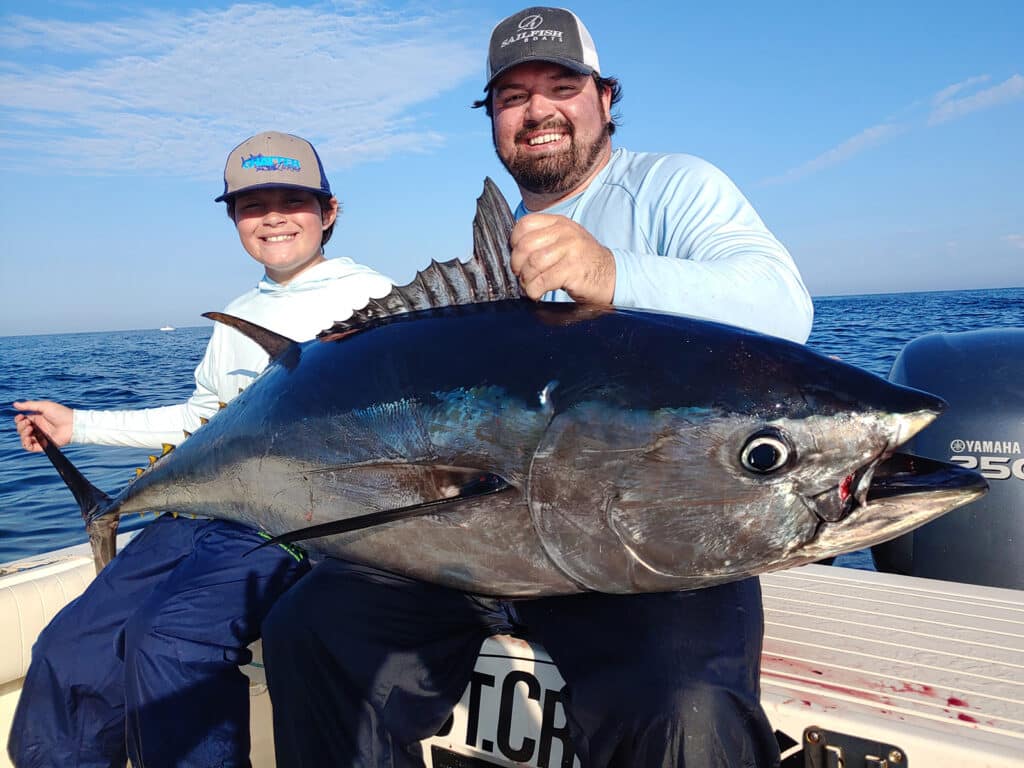
Big bluefin tuna are anglers’ first targets in July, as they have the ability to thermoregulate their body temperatures. They easily tolerate the cooler waters of the early summer. These bluefins push 60 inches and test the stamina of any inexperienced rod man. Capt. Jim Freda “Everyone keep your eyes peeled and look for massive feeds of finbacks and short beak dolphins, that is where we will find the tuna!”
After searching a bit, my son and mate Capt. Tommy Freda shouted, “Dad, three spouts about a quarter-mile to the northeast.” I quickly turned in that direction and ran right smack into a melee that can only be described as a Nat Geo experience. The primary forage bait out here is sand eels, and the finbacks and dolphins submerged beneath the pods and forced them to the surface. The finback whales beat their tails on the water’s surface, radiating shockwaves through the water column to stun the bait. That’s when the tuna darted in and buffeted to their heart’s content, inhaling the stunned baits.
“Grab those popping rods and let them fly”, I said. “Pull and pause, pull and pause. He’s on it, he ate it, you’re tight! Now set the hook three times hard and hold on and enjoy the ride.”
New Jersey Tuna Fishing Explained
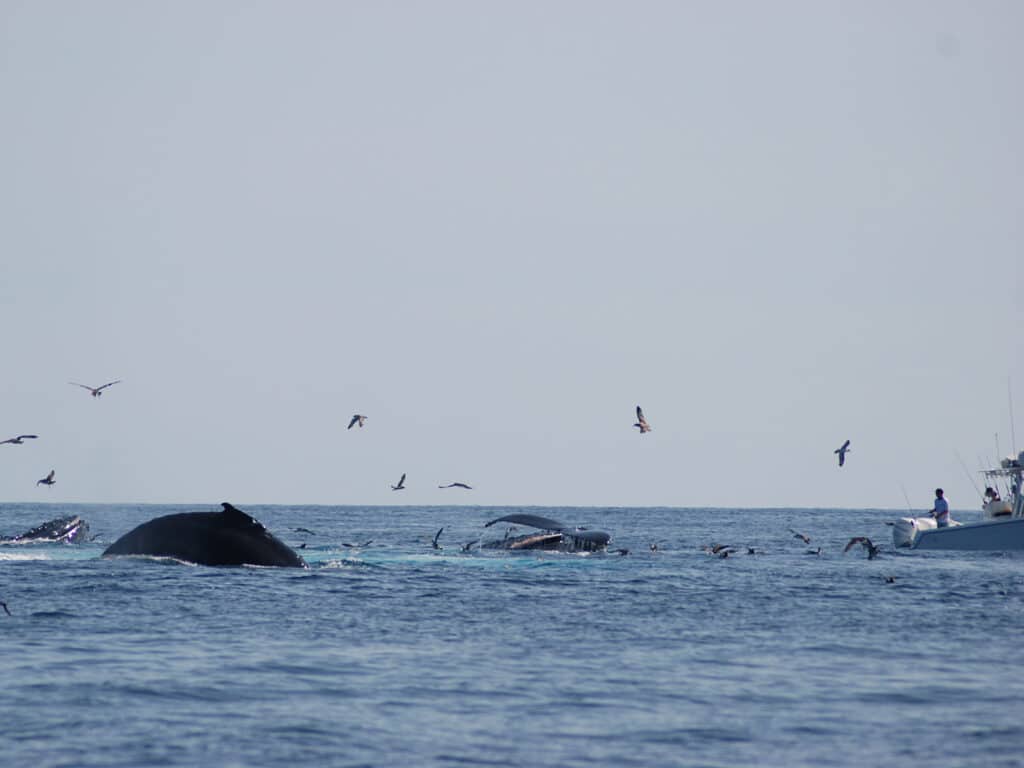
This is the drill as we head out each summer day in search of New Jersey bluefin and yellowfin. Find the feeds and you will find the tuna. The day begins at 2:30 a.m. out of my home port of the Manasquan Inlet, New Jersey, as we head east to the 30- to 40-fathom line, a ride of about two hours in my 28 Parker Sport Cabin. Starry nights and calms seas are the norm during the run offshore. Clients can catch some sleep, stretched out on bean bags in my 11-foot cockpit. The plan is to arrive at the feeding grounds right at false light.
The bluefin tuna are our first targets in July as their ability to thermoregulate their body temperatures allow them to tolerate the cooler waters of the early summer. These bluefins push 60 inches and test the stamina of any inexperienced rod man. They don’t give up easily. Many times, an angler will pass the rod to Tommy during the end game.
“The bluefin tuna run for the last several years has been impressive,” said Ray Bogan, U.S. Recreational Commissioner to the International Commission for the Conservation of Atlantic Tunas (ICCAT). “Seeing the spatial geographic range of school, large school, and small- to medium-size bluefin off the Mid-Atlantic and New England coasts is testament to the health of the stock and its increased range.”
In August, when ocean temperatures bump up to 76 degrees or more, the yellowfin tuna flood into the same area. Each year, it’s expected for yellowfin to migrate north from the southern canyons off Virginia and Maryland toward the Hudson Canyon off New Jersey. But for the last five seasons or so, we have seen the yellowfin take a left turn and leave the Hudson Canyon. They end up inshore about 15 or 20 miles. This puts them in an area known as the Triple Wrecks. The number of tunas showing up each year has been different, but recent seasons were described by many as “epic.” Three-man boat limits were common for all on board, with yellowfin weights between 60 to 80 pounds.
Regarding the yellowfin migration, Bogan said: “Our yellowfin fishery is dependent on responsible fishing practices by European, South and Central American, African, and Asians fleets, as well as our own. U.S. commercial fleets are among the cleanest in the world, and our recreational fleets have excellent compliance rates with the regulations impacting us. The U.S. has been vigilant in working to protect the health of these stocks and our own fishing opportunities.”
Trolling Spreader Bars for Tuna
In the beginning of the summer, before the sand eels set up on the lumps, the tuna are searching and cruising for the bait. When first arrivals show, trolling ChatterLure Side Tracker spreader bars is highly effective to bring the tuna into your spread.
“Our side trackers are designed to cause extreme commotion in the water utilizing our trademark ‘chatter bird design,'” said Justin Braun, developer of ChatterLures. “We truly believe the added disturbance of our side trackers is the reason for increased bites and higher catch counts.”
I believe side trackers work so well because of the commotion they cause just outside of your normal spread. Your boat and prop-wash bring the tuna up into your spread to take a look. If they don’t bite what’s there, I believe they slide out laterally and run right into the side trackers. Not to make the same mistake twice, they take the offering. For bluefins, I usually troll at 4.5 to 6.2 knots; for yellowfin, 6.5 to 7.5 knots.
Jig Fishing for New Jersey Tuna
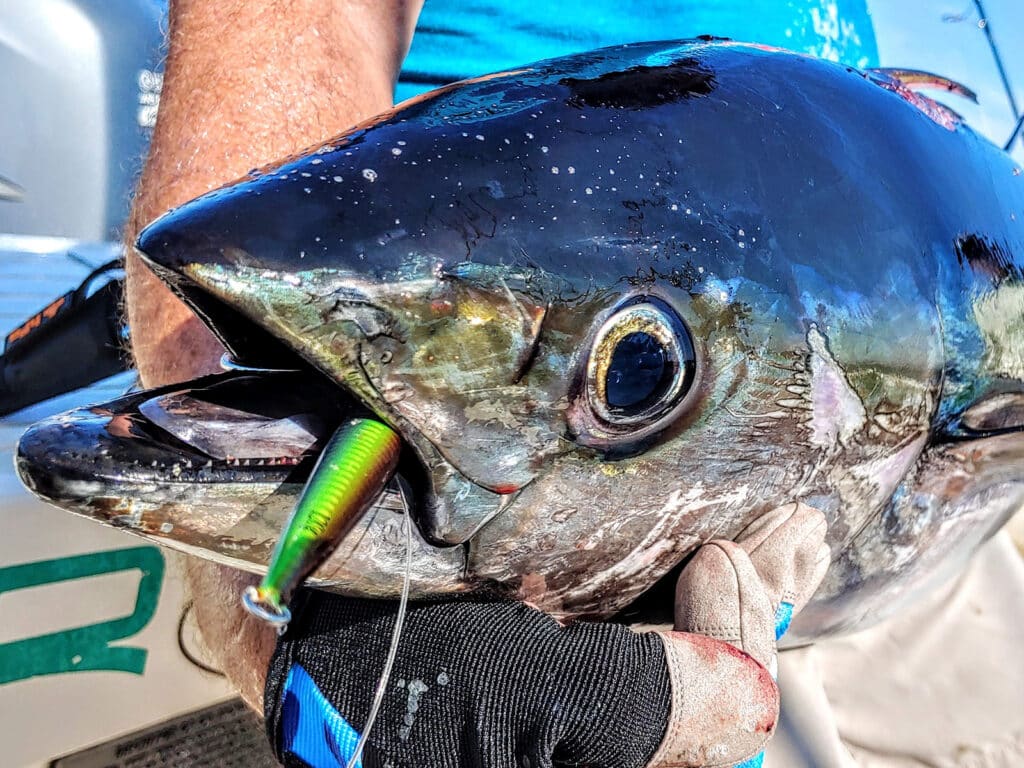
As the summer progresses and the sand eels settle in, daily yellowfin feeding frenzies become the norm. With sand eels spraying in every direction, light-tackle spinning rods get put into action. I use 6-foot, 6-inch St Croix medium-power or 5-foot, 6-inch Shimano Grappler Type J spin rods.
“Drop down three colors and pump and reel. Faster, faster, they will hit on the way up.”
My client, Matt, got the technique down and quickly came tight about 30 feet below the boat. “Wow, what a beast!” he exclaimed, as his rod pretzeled over the gunwale and his reel screamed.
Jigs are highly effective as the darting and zigging action mimics a sand eel fleeing. The Nomad Design Streaker jigs in the sand eel, blue, or pink sardine colors are deadly. Also, the ChatterLure jigs and CB One F-1 jigs, from Saltywater Tackle, account for many tuna.
I had great success in recent season jigging with 8 feet of 50-pound fluorocarbon leader while many anglers were using heavier 60- to 80-pound leaders. I felt I was getting bites when others weren’t due to my lighter leader. There were many days when it was basically drop-and-reel fishing. Clients were able to feel a big yellowfin crush their jig and have their stamina tested to the max.
Fishing With Chunk Bait for Tuna
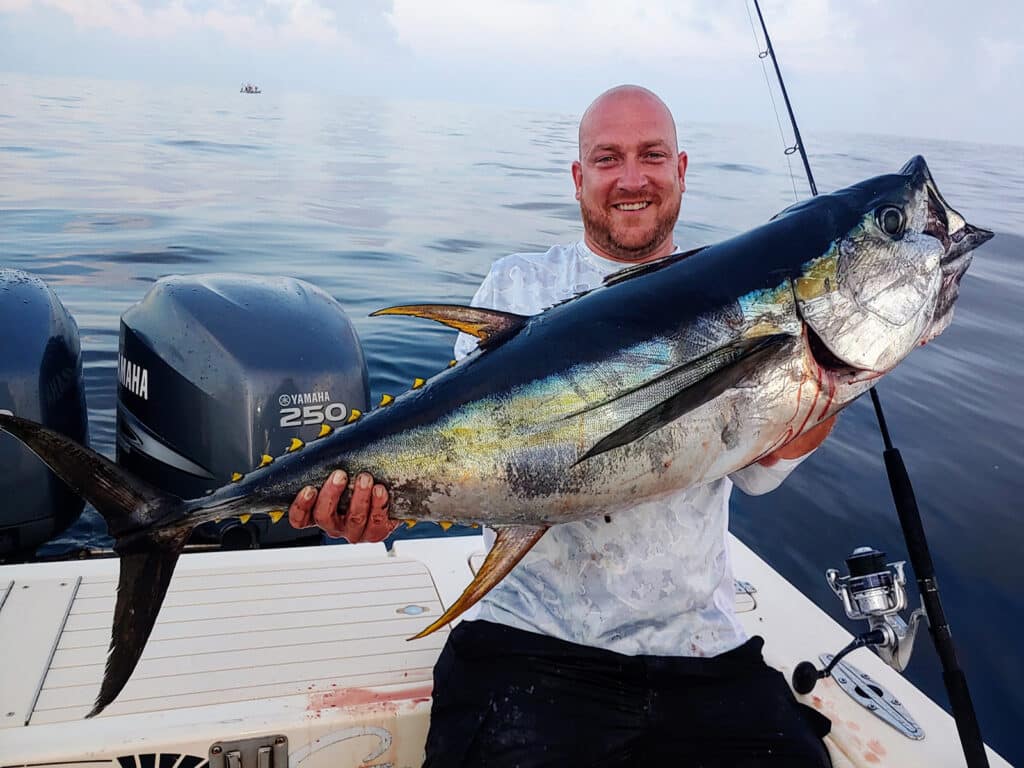
The chunk bite took over near the end of the summer only because so many boats started to pound the area each day. The yellowfin quickly became wise and stayed away from the metal. Chunking with sardines or butterfish worked, but if you brought out live peanut bunker, you could hand feed the yellowfins right behind the boat. Fish a live peanut bunker by placing a 5/0 Gamakatsu circle hook just below the dorsal. Or fish a dead bait by threading the hook through the mouth, then out the gill and into the belly.
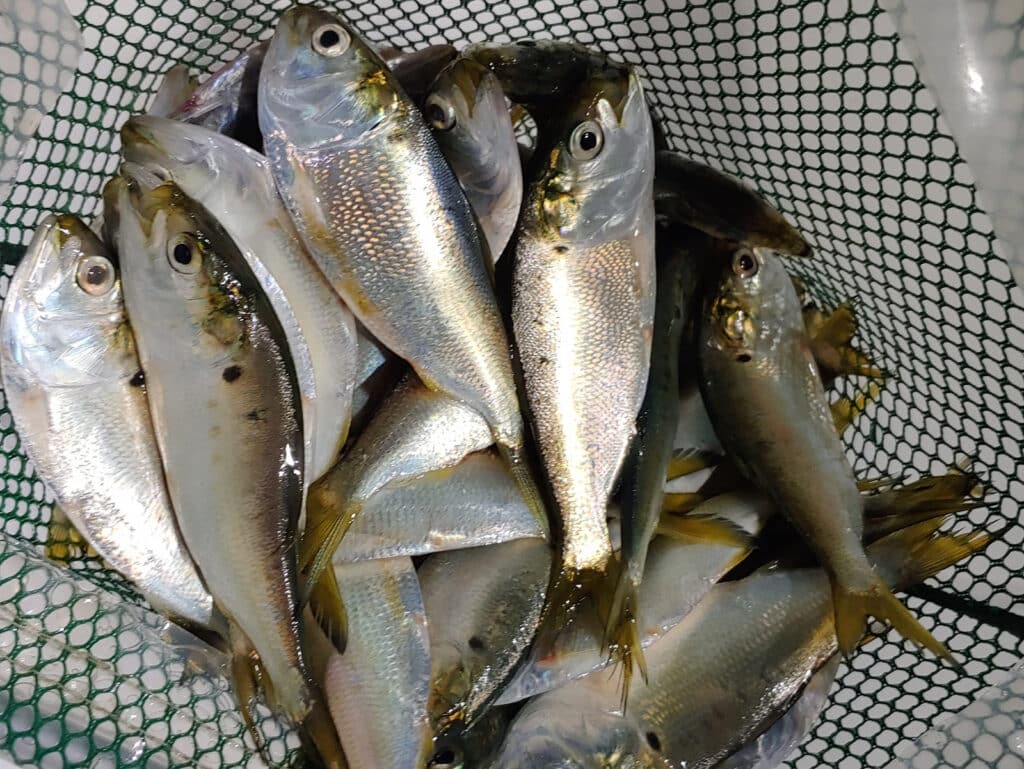
Flat lining these baits back into the slick with no weight was the method that worked best. As you drifted your bait back, it was important to keep slack in the line. This insured that the baits drifted back as naturally as possible. I lightened up my leader, choosing 40-pound fluorocarbon on finicky days, and 30-pound on really finicky days. These lighter leaders dictated the need to loosen your drag and to use a medium-action rod that was more parabolic in its bend.








